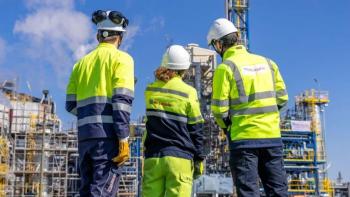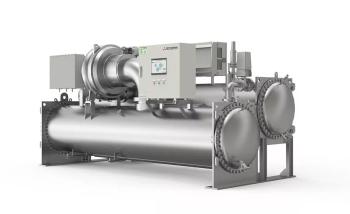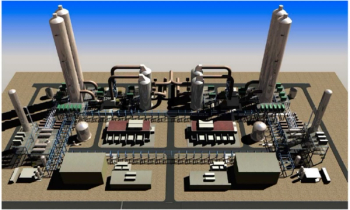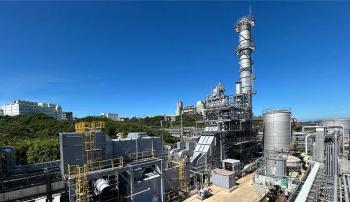
Q & A
DYNAMIC CHANGES IN THE TURBOMACHINERY MARKETPLACE
Rod Christie, President & CEO, Turbomachinery Solutions, GE Oil & Gas, discusses market shifts, the impact of 3D printing and how digitization will influence the oil & gas field.
How has the market changed over the last few years?
This challenging time in the oil and gas market has driven operators to focus on productivity, reliability, flexibility and operational excellence. Today’s biggest challenges all come back to providing technology that breaks new ground and reaches new levels of performance. The LNG market has seen investments shifting in time, due to the common need to deepen more the evaluation phase to improve project cost-efficiency. As anticipated, there is a general request to inject new technology into the market to reduce costs. We are improving our portfolio both on the driver and driven equipment side to fulfill this need. The power generation and small turbine markets will also see future growth.
Where is the market heading?
There is a consensus that oil and gas markets will begin to balance out in 2017, with a slight rise in prices and reduced constraints on expenditure. An independent survey by Deloitte found that 86% of professionals believe recovery will begin in the next two years. Gas will remain the fuel of the future. The 2016 International Energy Outlook projects 40% of the growth in
global energy demand from 2014-2040 will be met by natural gas.
Which gas turbines will dominate in oil and gas applications?
Over the past few years, we have seen aeroderivative gas turbines (GTs)
increasingly becoming valid alternatives to industrial GTs for LNG and industrial applications. However, the conventional difference in terms of efficiency and characteristics between them will disappear in the long term. We are already introducing technologies that combine the best of both. An example is the LM9000, which has performance that is typical of aeroderivative machines, while providing the reliability and robustness
of industrial GTs.
What are the best markets for gas turbines?
GTs remain more competitive for mechanical drive and power generation
in environments where there is no consolidated infrastructure, such as remote
sites. Electric drive has an advantage mainly in high-infrastructure contexts,
particularly in terms of emissions, such as our Integrated Compressor Line.
How is 3D printing changing turbomachinery?
The three main areas are fast prototyping, component re-design and making spare parts for installed fleets. Using 3D printing, we can rapidly test
several design concepts, significantly shortening the development cycle. Four
different design concepts of the NovaLT16 fuel burner were manufactured using a Direct Metal Laser Melting (DMLM) machine and tested on our full-scale combustion rig. This fast prototyping reduced the development and validation cycle of these parts by more than 50%.
One example of component re-design is better cooling of gas turbines hot parts via complex designs and geometries that could not be achieved by other production techniques. The 3D printing of spare parts for installed fleets shortens production cycles and brings production where it is needed — at customer sites. The only technological limitation is the size of DMLM machines, which restricts the scale of the components that can be built.
How about digitization?
We continue to expand our digital capabilities for oil and gas to deliver deeper
insights, optimized operations, and operating flexibility through data and software. From reservoir to refinery and from design through operations, our
Predix cloud-based operating system built for the Industrial Internet is bringing step-change improvements in productivity and efficiency.
GE connects machines such as turbines, compressors and lift systems with software, using the data to optimize operations. We are also developing digital twins, which are virtual models built from a collection of data to analyze and continuously learn from.
The use of digital analytics can improve how factories operate. This includes being able to predict maintenance issues to avoid machine failures and scrap. Additionally, it is possible to avoid product performance issues by catching them at assembly. This embrace of digitization should be viewed as a path to
a stronger, more sustainable industry to meet rising energy needs.
How about other advanced manufacturing techniques?
Virtual reality is used to eliminate defects and improve efficiency. We validate product designs using VR tools to immerse engineers in near-full-scale virtual assemblies. This helps to ensure parts and tools come together correctly. It also creates a more collaborative environment.
Laser inspection technology is used to validate the accuracy of large-scale equipment and assemblies. Other advanced inspection methods can include 3D scanning and x-ray tomography. With collaborative robotics, we implemented the first completely automated line in our Talamona plant
(Northern Italy) for nozzle production. It uses two anthropomorphic robots capable of employing ten different technologies, including electrical discharge machining, measurement and laser-beam welding. With this new line, GE Oil & Gas can produce components that it previously purchased from third-party suppliers.
Newsletter
Power your knowledge with the latest in turbine technology, engineering advances, and energy solutions—subscribe to Turbomachinery International today.





